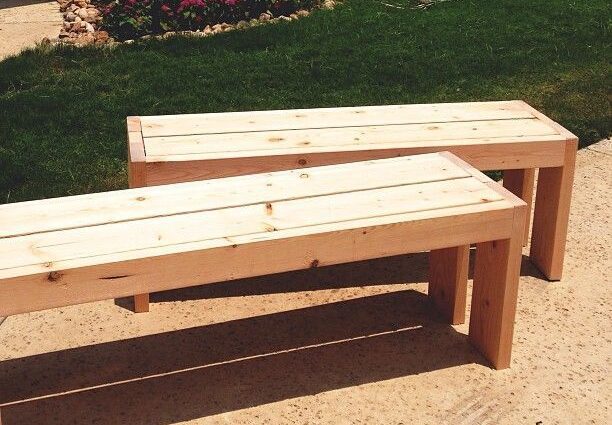The transformation of the old wooden bench is the final stage in the arrangement of the recreation area.
Decorator Ekaterina Savkina
Do-it-yourself garden bench
Photo 1,2. The bench was cleaned with a stiff brush from dust, twigs and leaves that had fallen from trees, and then treated with sandpaper.
Photo 3. Pronotex impregnation, previously tinted in oak color, was applied to the bench surface with a roller.
Photo 4. Dulux Trade Satinwood alkyd paint (color 50BG44184) was used to paint the frontal boards in blue.
Photo 1. The work of stenciling was easy. The secret is that the stencil is made to order on a self-adhesive film.
Photo 2. The drawing was applied to the surface with a stencil brush. In this case, Satinwood brown paint (color 70YR16345) was used. It is important to let the layers dry well after each painting step.
Photo 3. The stencil was carefully removed. The art work on the renovation of the bench has been completed, the decoration with textiles remains.
Since the bench is on the street, it is possible that a sudden rain will soak it. Therefore, for the covers, we chose a polyester fabric with a water-repellent impregnation in two colors: brown and blue. Even if the fabric gets wet, it dries quickly. For three pillows (“Inner” from IKEA), three identical covers with dimensions of 50 x 50 cm were sewn.
Photo 1. A canvas with dimensions of 105 x 55 cm is cut out of brown fabric, as well as ribbons 10 cm wide from blue fabric. The narrow edge is processed.
Photo 2. The narrow edges of the cover are not sutured in the middle in order to insert the pillow. A hidden zipper is sewn here.
Photo 3. The blue finishing tape is sewn into the side seams of the cover, after which the side seams themselves are sewn up.
Photo 4. The garter ribbons are cut in advance along the shared thread of blue fabric, then their edges are ground and sewn to the cover.
Photo 1,2. The final stage of making the cover is a reinforcing seam along the edges of the product. It is also necessary so that the fabric does not crumble.
Photo 3. From the seamy side along the seams, cut off the excess fabric, and also, which is very important, cut each of the four corners obliquely as close to the seam as possible. This technique is used so that the corners of the finished product do not clump and look neat.
Photo 4. The pillow is inserted into the finished cover, fastened and tied to the back of the bench. A blue blanket casually thrown on the bench complements the composition and invites you to sit down and relax.










